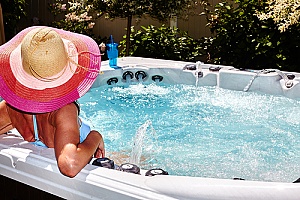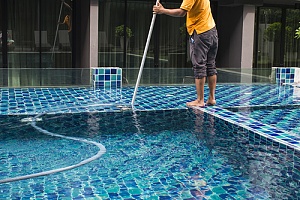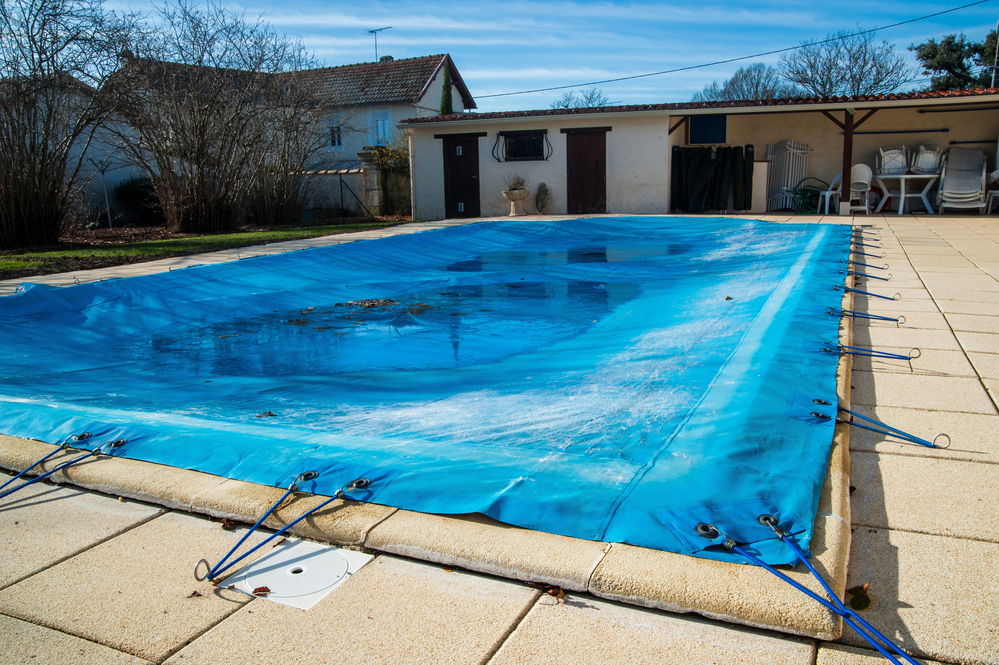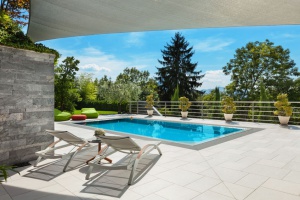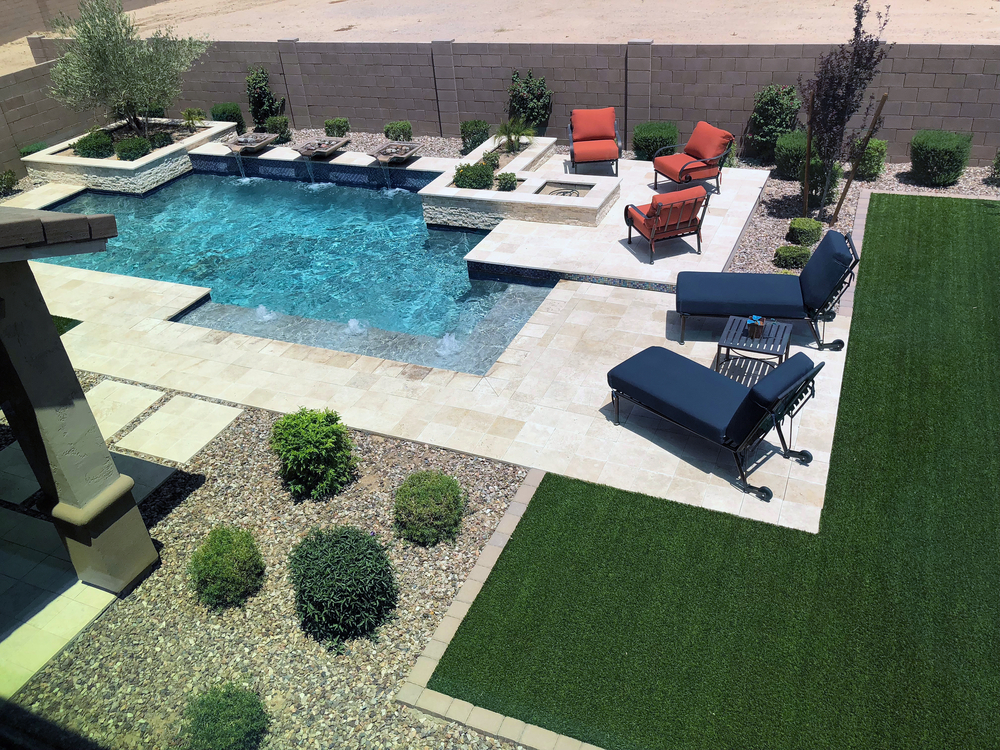 Swimming pools provide a great way to relax, exercise, and enjoy yourself on a hot summer day, coming in a variety of different shapes and sizes. To efficiently and safely operate a swimming pool, you’ll need to have a pump, basin, water filter, chemical feeder, return, drains, and the proper plumbing to transport your water. There are many swimming pool designs available.
Swimming pools provide a great way to relax, exercise, and enjoy yourself on a hot summer day, coming in a variety of different shapes and sizes. To efficiently and safely operate a swimming pool, you’ll need to have a pump, basin, water filter, chemical feeder, return, drains, and the proper plumbing to transport your water. There are many swimming pool designs available.
Easy Build
Depending on the basin structure, there are various types of pools available for you to choose from. Above ground swimming pools are the easiest to build and the cheapest to buy, as they come with pre-made kits. Fiberglass pools are built using molded fiberglass, reinforced plastic. Fiberglass pools are in ground, and can provide you years and years of family fun and swimming excitement.
Least Expensive
Vinyl lined swimming pools are the cheapest types of in ground designs you can get, although you’ll need to have the liner replaced every 10 years or so. Concrete is another popular design for in ground pools, as they provide plenty of room and no need to have the liner replaced.
Public Pools
There are also the public swimming pools, which include heated indoor pools, children’s pools, and outdoor pools. Public swimming pools are well known for their slides and other features such as waterfalls and splash pads. Public pools are great for hot days, although most prefer to get their own pool due to public pools being so crowded on a frequent basis.
Spas
Swim spas, or exercise pools are also popular, known for their resistance swimming. Swimming is one of the best exercises that you can do for your body, as it works just about every muscle in your body. There are several exercises that you can do in an exercise pool, such as jogging, water toning, and water yoga.
Basic Swimming Pool Designs & Styles
- Rectangular Pool Designs
- Above Ground Pool
- Space Saver Pool
- Vinyl Pool
- Enclosed Pool & Spa
- Lap Pool
- Natural Pool
- Saltwater Pool
- Infinity Pool
- Oval Outline Pool
- Kidney Shape Pool
- Perimeter Overflow Pool
Some of the above referenced pool styles make for great swimming pool ideas for the backyard.
Installation Costs
As for swimming pool design installation costs;
- Expect to pay about $50 per sq. ft. to install a typical in-ground swimming pool design.
- The price goes higher if you want more depth because of excavating, dump truck hauling and material haul off.
- Accessories like pumps, heaters, ladders and filters, as well as cleaning tools, covers, and chemicals to keep the pool clean add additional costs.
- In the US you will pay anywhere from $17,000 up to $50,000 for an in-ground pool depending on its size, shape, materials, and extra features.
- National average is around $30,000 for a 32′ by 16′ in-ground swimming pool.
- Fiberglass pools will cost more than vinyl-lined ones.
- Concrete and gunite pools are significantly more expensive, expect a price tag of $50,000 to $100,000 for an average-sized pool.
Additional Notes;
- A concrete pool gives you more flexibility with design features.
- Vanishing edges and tanning ledges have higher lifetime costs.
- Concrete pools need to be renovated every 10 – 20 years.
- Expect to pay $8,000-$15,000 for resurfacing and retiling.
Water Treatment
No matter what type of swimming pool it may be, it’s very important that the chemicals stay balanced. If the balance of the chemicals is off, it can damage the water, which can really irritate your skin and your eyes. Therefore, swimming pools need to be disinfected on a daily basis and treated with various chemicals. To maintain the proper health of the skin, purifying the water is very important.
Pool Addition
If you are looking to add a swimming pool to your property, there are several for you to choose from. Swimming pools can help add property value to your home, which is always a good thing. When you add a swimming pool to your property, you should always think in terms of safety, and ensure that your pool is protected against young children. If you take care of your pool and always make sure that things are clean and safe, your pool will provide you with plenty of fun for years and years to come.
Winterizing Your Swimming Pool
Once fall ends and winter begins to rear it’s ugly head, it will be time to shut your pool down. When shutting your pool down, the first step will be the water. You should begin by checking your pH level, and making sure that it is around 7.5. If it isn’t, simply add some dry acid. You should also check your chlorine as well, and use a winterizing product to make sure that your pool will be protected from algae during the few months that you won’t be swimming.
Cold Weather Operations
During the winter months, you should run your pump for around 6 hours a day, to ensure that the algae doesn’t settle in. You should also go ahead and check for any types of leaks as well, then switch your skimmer valve off and let the water drain to around 6 inches below the skimmer’s bottom. This way, you’ll have the preferred amount of water in your pool.
Covers
If you are using a summer cover, take it down and give it a good cleaning using fresh water and a pressure washer if you have access to one. Once you have cleaned the cover really good, go ahead and put it in your building or garage and break out your winter cover. When you put your winter cover on the pool, make sure that you have plenty of tension on the cover, to prevent anything from getting under it.
Check The Covers
Although you may have put the cover on tight, you should still check it every couple of days to make sure that it is still tight. Remind your family and friends that you have closed your pool down for the winter, and that they shouldn’t be around it. Pool covers are designed to protect your pool and the water – they aren’t made for safety. Never, under any circumstances should you let a pet or a person on the cover.
Drain The Water
Once you have finished with the cover, it is time for the equipment. You’ll need to drain the water from your pump, heater, and your filter. Each one should have a drain plug located somewhere near the bottom, which makes it easy to drain the water out. You should never forget to do this. Water can freeze inside of your equipment during the cold months. With freezing water expands by 9% and can cause permanent damage of your equipment. Cracked pipes and drains are no fun to repair and will result in costly repairs.
Maintaining Your Swimming Pool During the Winter Months
Proper winter maintenance is crucial to keeping your swimming pool in good condition for the next season. Running the pump daily for about six hours prevents algae from settling, while checking for leaks ensures that your pool remains in top shape. Draining water from your equipment, including the pump and filter, prevents costly damage caused by freezing. By following these steps, you can relax knowing that your pool will be ready to use when summer returns.
Relax
Once you have finished getting your swimming pool ready for winter, you can relax knowing that your pool is protected. Keeping a check on it every few days will ensure that nothing has happened. Once summer starts to arrive again, you can get your pool ready for summer and prepare to open it up again. If you’ve done things right – your pool will be ready to go in no time at all.
Pools Are A Lot Of Work
If you are tired of your pool, you might think about a pool removal project. The swimming pool removal process isn’t an easy job; it’s a job that requires a high level of skills, experience, and expertise. Dirt Connections can provide you the prompt, precise, professional service you deserve. If you have any questions, contact our office.
Summary

Dirt Connections was started with one goal in mind: providing quality residential and commercial construction services to clients on time and on budget. Reach out for more information on how we can support your next project.
For your convenience our estimates are free and by appointment. Call 703-940-9949 for a free estimate today!

